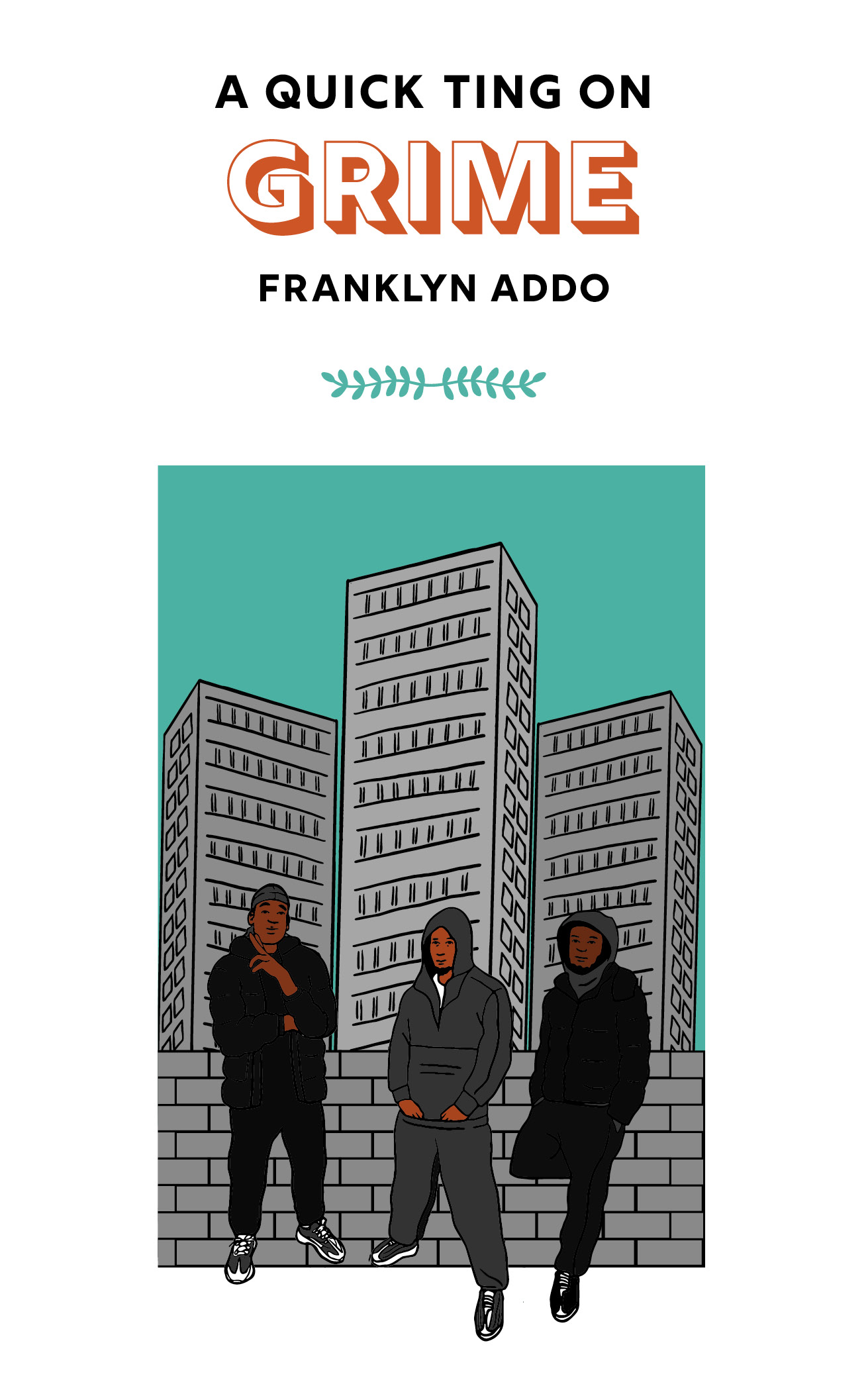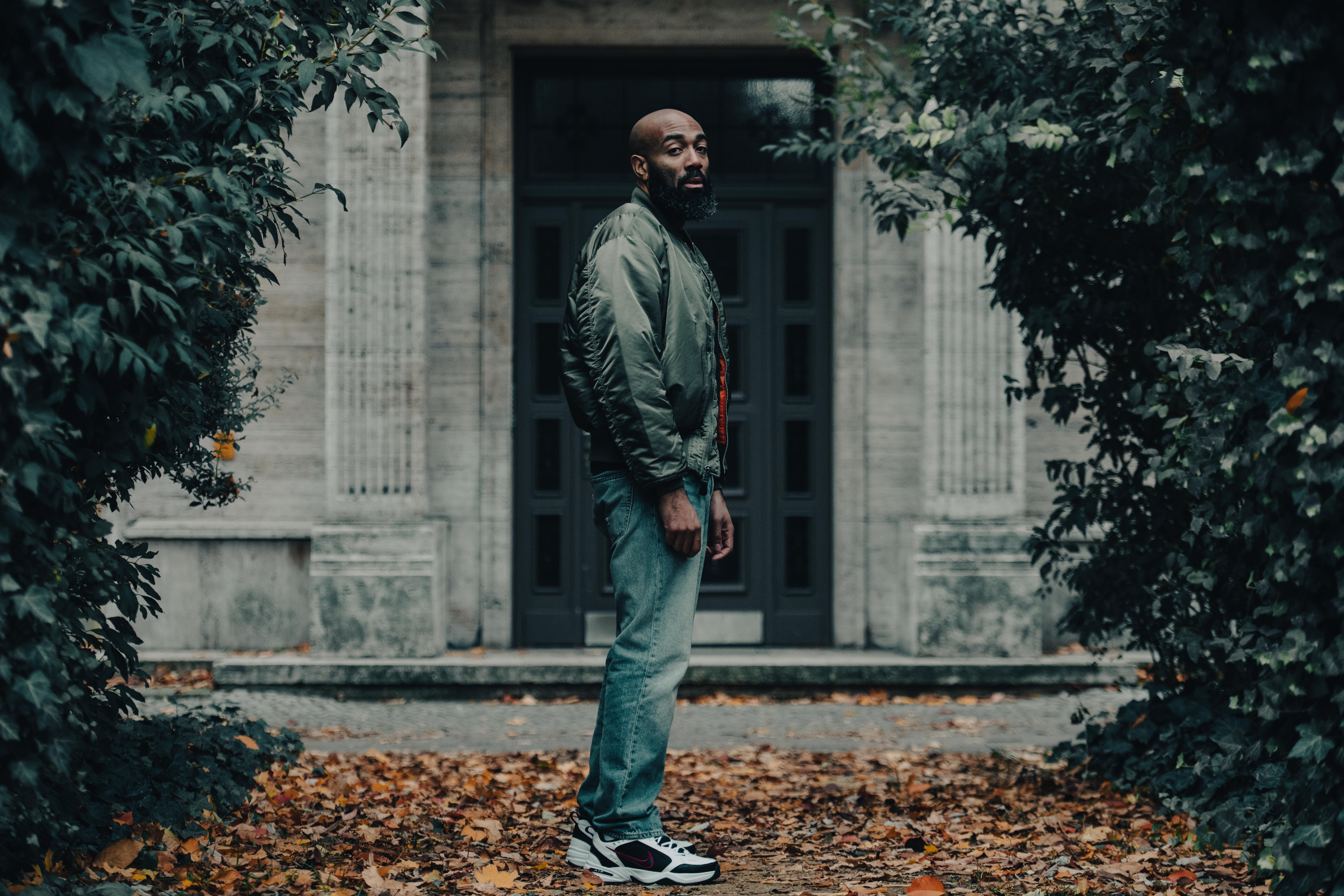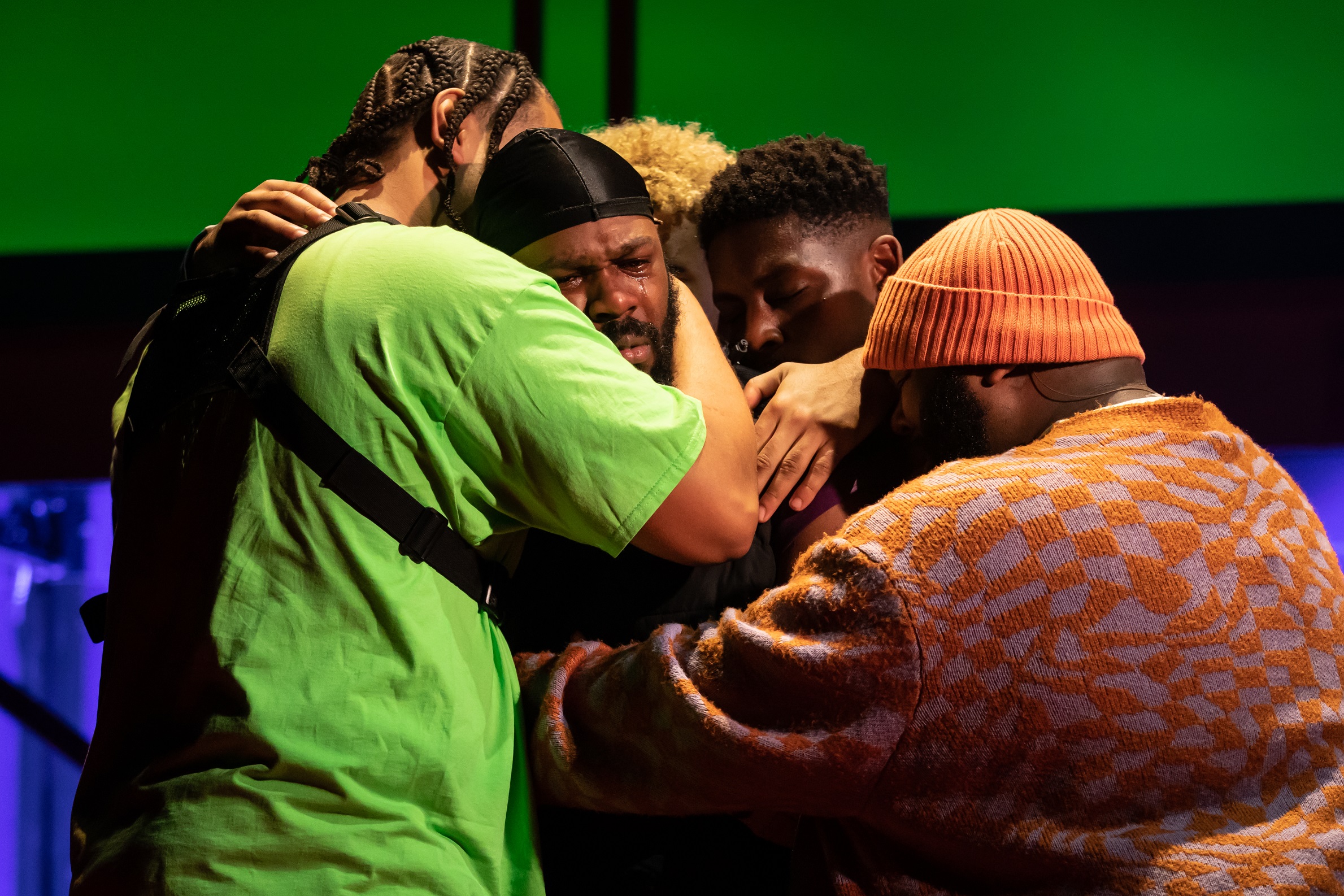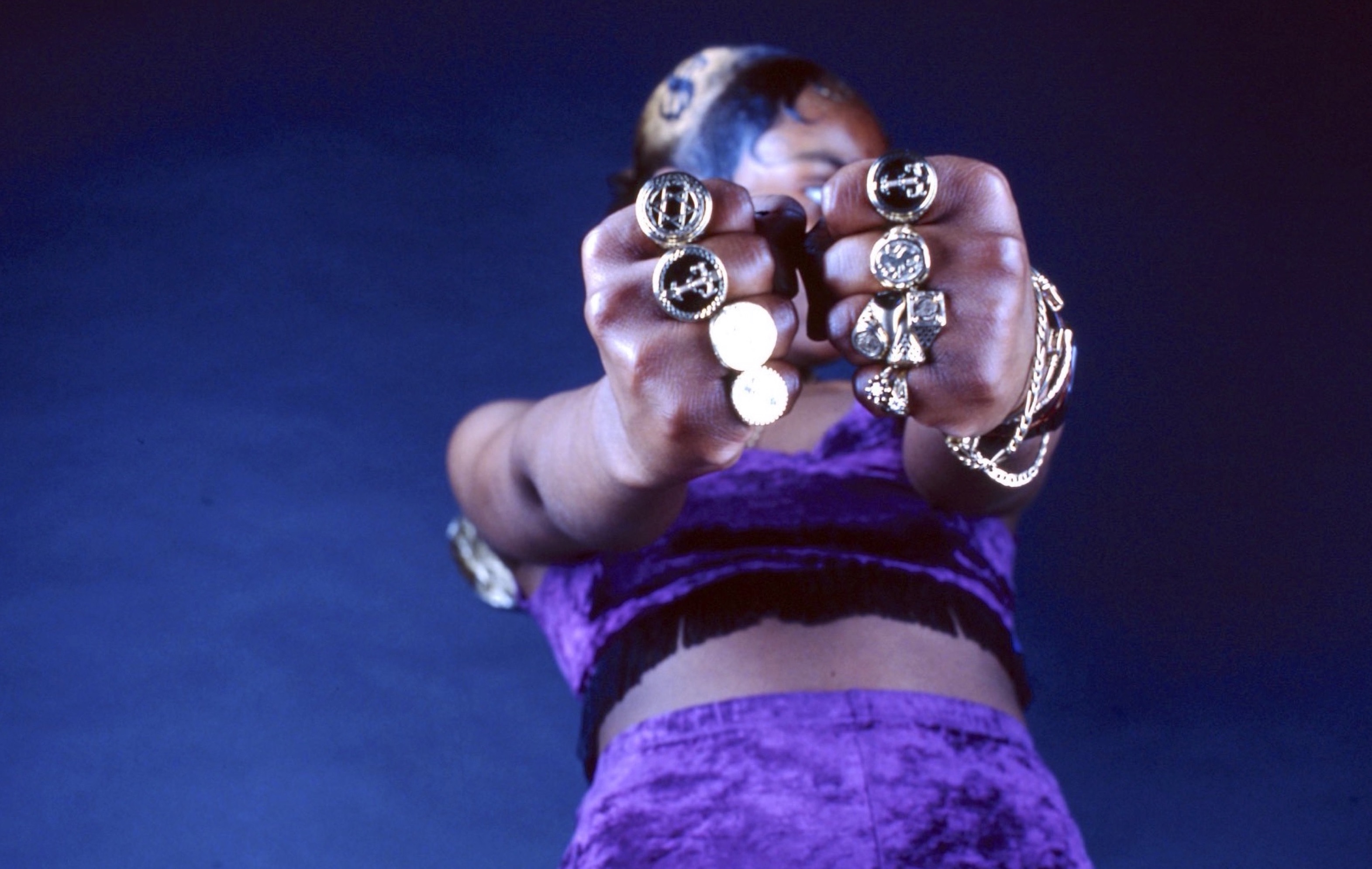A Quick Ting On Grime
From pirate radio to Glastonbury's Pyramid Stage, journalist and rapper Franklyn Addo pens an extraordinary narrative of the history, present and future of grime music in his new book.
The Reading Room
Welcome to our Reading Room. Dive into a deeper conversation and find leads for your reading list with our collection of extracts from upcoming books - by writers you know, and writers you should get to know.

A Quick Ting On is an idea rooted in archiving all things Black British culture. It is a book series dedicated to Black Britishness and all the ways this identity expands and grows. Each book in the series focuses on a singular topic that is of cultural impor- tance to Black Britishness (and beyond), giving it the sole focus it deserves. The series was inspired by everyday conversations had with Black British folk far and wide, whether that be in WhatsApp group chats, in person, on social media, at parties, barbecues and so on.
A Quick Ting On is about providing an arena for Black people to archive things that they deem important to them and in turn allowing these explorations to exist long after we are here.
A bundle of joy, learning, nostalgia and home.
Magdalene Abraha FRSA (Mags)
277 to Leamouth
Much of the rich history of grime music links to the post-industrial valleys of East London. The recognition grime eventually received owes to contributions from across the entire capital, but inner-city enclaves like Stratford in London boroughs like Newham and Tower Hamlets are especially central to grime’s story.
‘My name is Raskit, listen to my flow,’ raps grime pioneer Dizzee Rascal on a song called ‘Cut ‘Em Off’. Dizzee’s voice has not yet shed altogether the higher frequencies of adolescence. ‘Cut ‘Em Off’ is track 7 on his debut album Boy in da Corner, which was released in 2003 by XL Recordings to critical and commercial acclaim. Dizzee Rascal was just about 17 years old when he was self-producing and recording most of what would constitute this formative collection of songs. Although his youth is apparent upon listening, the breakthrough MC delivers his words with passion beyond his years, offering what would be widely analysed in time to come as incisive social commentary.
I can never forget receiving Boy in da Corner as a gift from my older sister. Cella was fanatical about music, avidly listening to everything from gospel and old school soul to R&B and rap. Albums like Beverley Knight’s Who I Am and Nas’s God’s Son are examples of the staples that could be heard blaring through our house at anytime. Also in her palate were the rapidly mutating sounds of the UK underground as ripped from pirate radio sets and recorded onto tapes and minidiscs. A 7 year age gap meant that I was far too young to go along with Cella to clubs like Palace Pavilion in Clapton where UK garage once reigned. But I certainly would live vicariously through her, naturally inheriting some of her tastes while being exposed to all manner of new music. With its spacey synthesis and pulsing bass, songs like Sia’s ‘Little Man’ were to be forever etched in my memory.
And songs from albums like Boy in da Corner helped to form my musical sensibilities from early on. I listened to the album over and over again. My Sony Walkman would whir and stutter mechanically, as though having to work particularly hard to deliver me sound. True, the explicit content of Dizzee’s now seminal first album may not have been age-appropriate for my consumption at barely 11 years old. But the naivety and blissful ignorance of youth meant that any profanity in the music was as lost on me as its poignant and at times political substance. Only in later years would I grow to appreciate Dizzee’s insightful musings on everything from being subjected to heavy handed policing, to the use of violence as a means to protect or assert oneself, to the inequalities of modern British society and the differential realities experienced by citizens as informed by race and class. Even back then, though, I recognised my Boy in da Corner CD as one of the most meaningful presents I’d received. I cherished it as one of my favourite possessions. It felt symbolic to behold a physical product that so prominently featured someone like myself, not just a young Black man, but one with whom I seemed to share cultural and contextual affinity. The album’s artwork, for instance, is designed by Ben Drury and photographed by Dean Chalkley on film. Digital photography had not yet proliferated by this point in time. To the bottom right of the cover is a grayscale image of a young Dizzee Rascal. The monochrome portraiture contrasts starkly with the cover’s bright yellow background. In the photo, Dizzee is sitting wearing a baggy-fitting Nike tracksuit and Air Max BW trainers, along with his stern expression.
‘I socialise in Hackney and Bow,’ Dizzee continues to rap on ‘Cut ‘Em Off’, his voice unsettlingly shrill; his delivery animated and authoritative. Indeed, it’s clear how Dizzee’s artistry was inspired by location. The sharp geometric lines and bold, angular font on the album’s front cover is reminiscent of the brutalist architecture common in social housing estates at the time. The inharmonious sound of Dizzee’s music and his tongue-in-cheek, provocative lyrics were influenced by the aesthetic and social context of his urban environment. Just like Tinchy Stryder, the frontman of the renowned grime crew Ruff Sqwad, Dizzee Rascal also grew up on an East London estate called the Crossways. The Crossways estate was also known locally as the pride of Bow, or the three flats. This latter name became particularly popular for the estate as it was formed most notably of three tower blocks, each looming 25 storeys high. Consisting mainly of three bedroom, family-sized units, the Crossways estate provided a total of 298 homes. Such was the dense populousness of a rapidly evolving London. The ever growing economic stature of the city had long attracted migrants from the suburbs, from other UK regions, and from many countries internationally. A significant number of Caribbean nationals of the Windrush generation for instance would emigrate to Britain throughout the 60s, 70s and 80s. The industrially flourishing East End of London provided job opportunities for newly arriving British citizens, as companies like Ford, Unilever and Tate and Lyle based their operations by its docklands.
Hearing Dizzee Rascal namedrop such specific East London areas on his records might not move someone who is devoid of local context very much. But these references meant everything to those of us familiar with bus routes like the D6 and the 277, which run from Hackney locations like Mare Street and Dalston Junction through Mile End and Canary Wharf, to the Isle of Dogs. For those of us also inclined to buss low batties, as in to follow the fashion of wearing our trousers ‘ridiculously low’ beneath our waists as Dizzee described, it was special to hear our lifestyles portrayed so accurately in music.
Extract from A Quick Ting on Grime by Franklyn Addo, published by Jacaranda on 16th November 2023 in hardback, £12.99. Pre-orders are available now.
The Lead is now on Substack.
Become a Member, and get our most groundbreaking content first. Become a Founder, and join the newsroom’s internal conversation - meet the writers, the editors and more.





